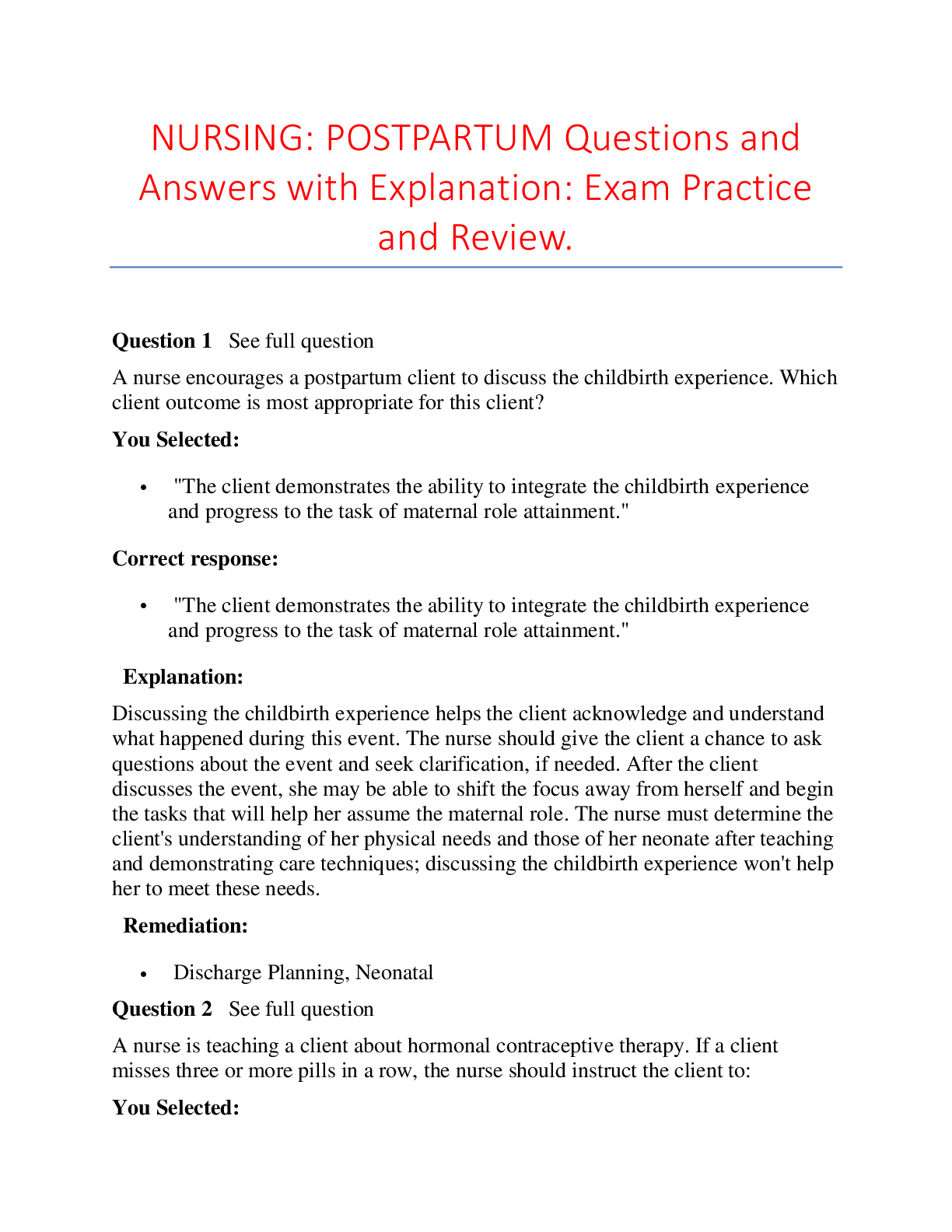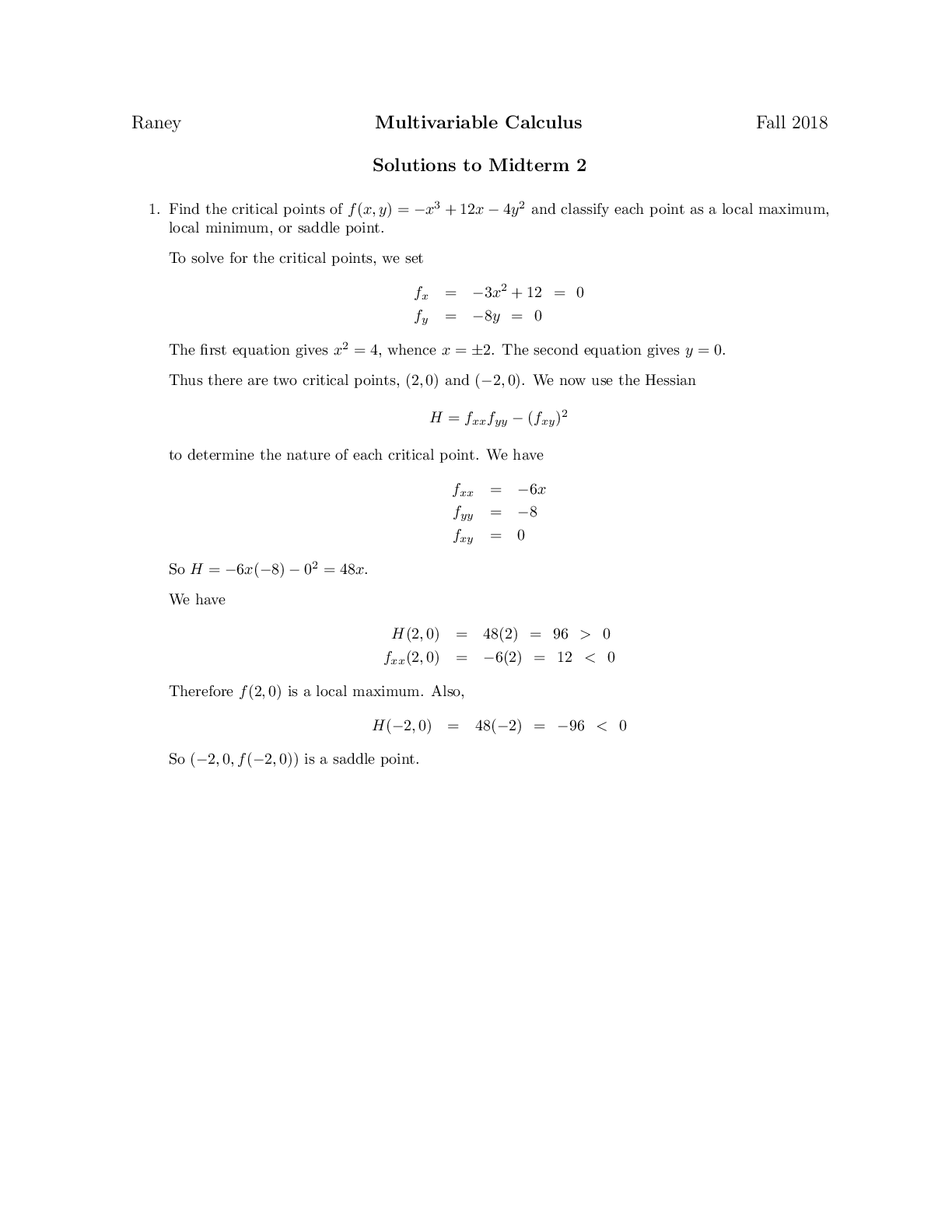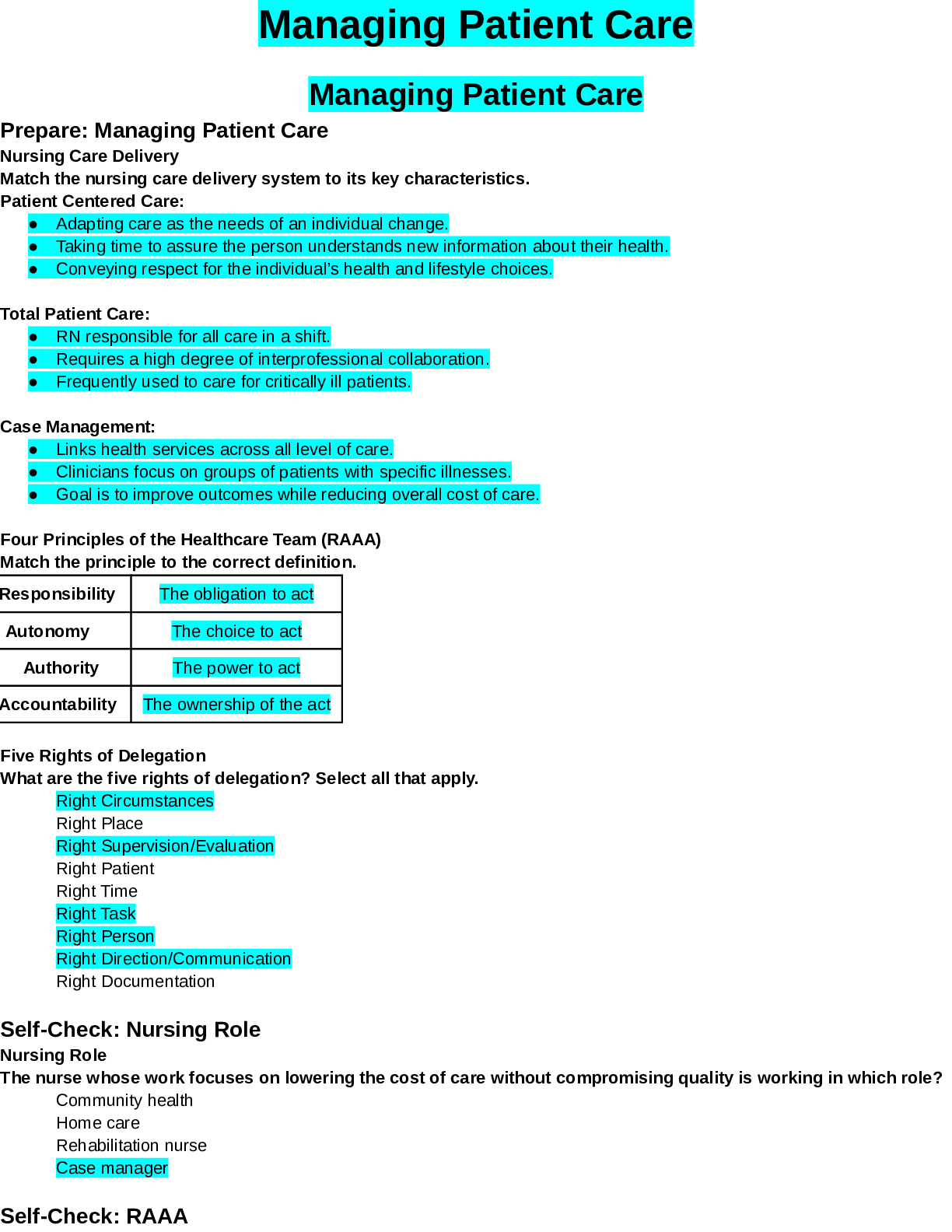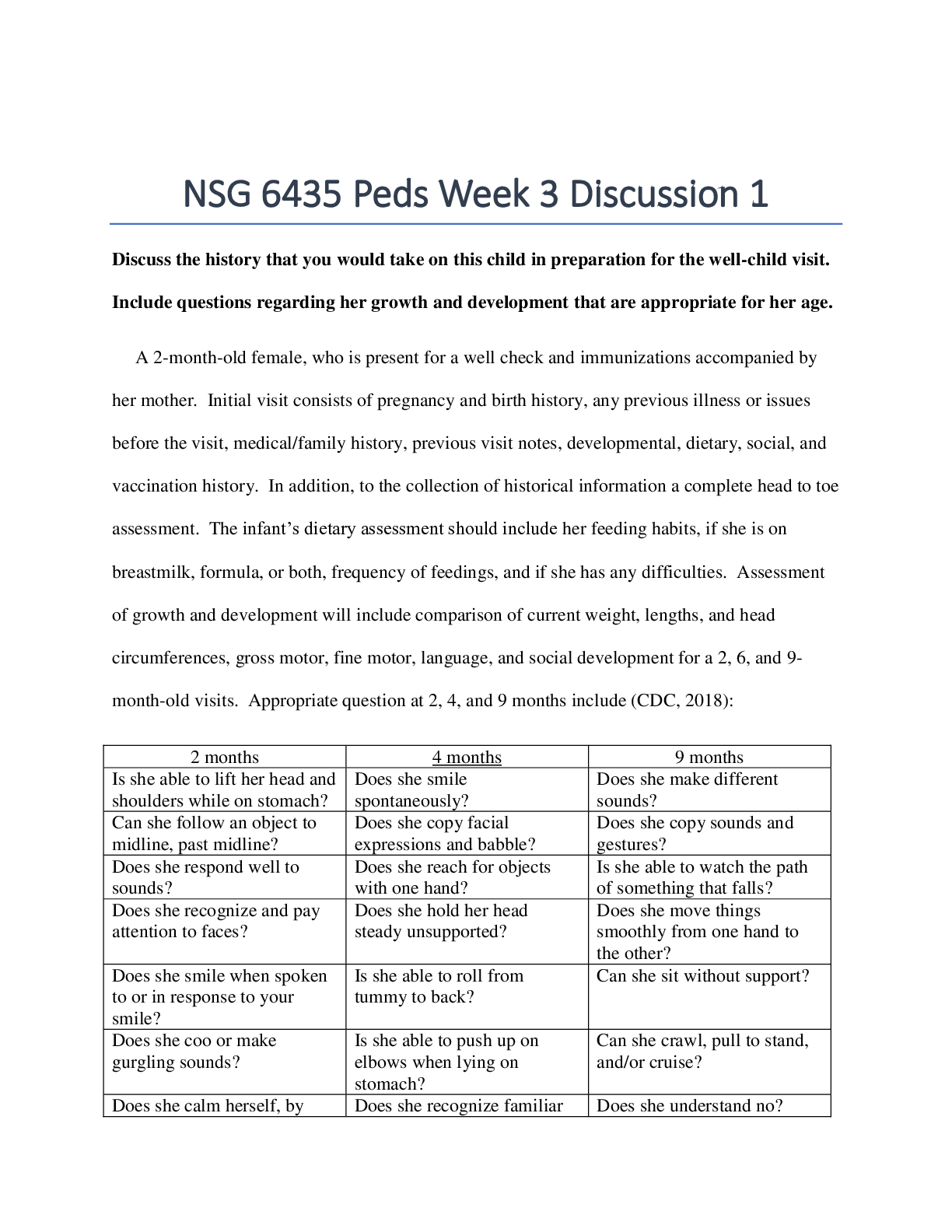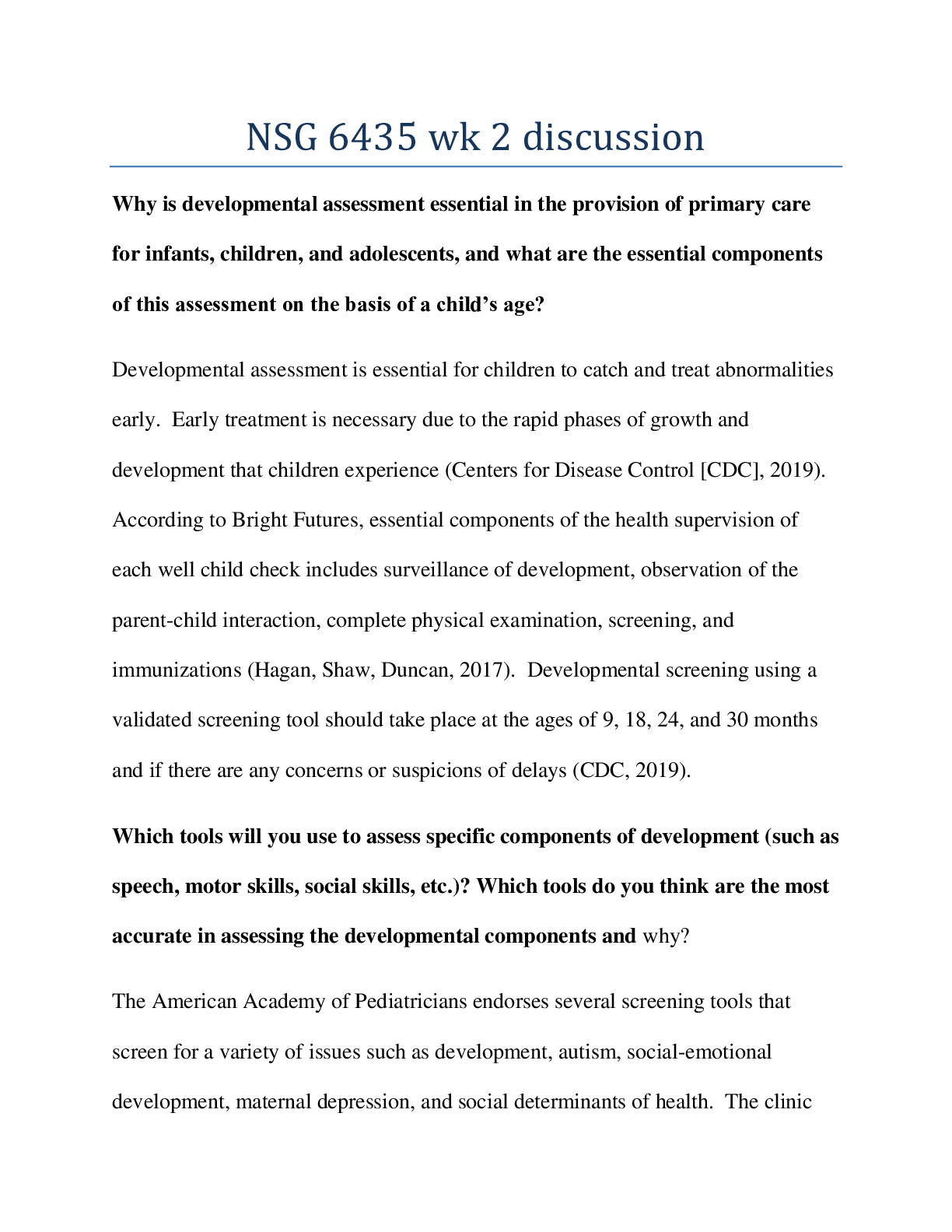Chemistry > QUESTIONS & ANSWERS > Questions and Answers > Unit 1 Lab: Save Anthony – Scientific Methods and Filtration 34 pts (All)
Questions and Answers > Unit 1 Lab: Save Anthony – Scientific Methods and Filtration 34 pts
Document Content and Description Below
Unit 1 Lab: Save Anthony – Scientific Methods and Filtration 34 pts Our mission is to diagnose and treat Anthony. We need to learn about chemistry in order to help him. Go to: https://www.explor... elearning.com/index.cfm?method=cUser.dspInputClassCode Enter one of these class codes and sign up for an account: RBLZVZ or 9HMTDC You will need to make an account. Remember your password. Then just click on the flashing buttons to move through the lab. Fill out all the questions and put in the assignment box in the Unit 1 Lab folder (in the course) when done. Password________________(write it down so you remember it for your next lab). 1. What are the three issues that may be causing Anthony to feel ill? 2. What data did you gather? Chest X-ray: (highlight one) abnormal normal | Solutes | Normal Range | Anthony’s Range | Low, normal or high? | Urea | 10-26 mg/dL | 187 mg/dL | High | Potassium | 3-5.5 mmol/L | 9.6 mmol/L | High | Albumin | 2.5-3.5 mg/dL | 3.2 mg/dL | Normal 3. Diagnosis: Using Anthony's symptoms and initial lab results, describe how you know which of the three problems Anthony has? 4. Solutes: A substance that is dissolved in another substance Homeostasis Handbook 4. What is the definition of homeostasis? 6. What is the definition of equilibrium? (You can use the Internet to look it up, but write it in your own words). 7. What is an example of a negative feedback loop? 8. What is an example of a positive feedback loop? 9. How do humans maintain homeostasis for blood sugar? (Hint: what organs and chemical signals are involved) 11. Anthony is a diabetic. Why would it be a good idea to give Anthony dialysis? Use the data from the table above to support your answer. 12. What does dialysate mean? 13. What does semi-permeable membrane mean? 14. Explain the relationship between pore size and how solutes travel through the filter. (hint: you can use a noodle strainer as an example in your explanation) 15. What does concentration mean? (Hint: you can explain in terms of mixing lemonade). 16. Why is there no movement of sodium? 17. Why do potassium and urea move out of the blood into the dialysate? 18. Why does albumin not move out of the blood? 19. What is a semi-permeable membrane? 20. What did you predict the concentration would be at 15 seconds? Explain your answer. Back to Treatment 21. What is wrong with the filter? How do you know? 22. How did you know the filter was fixed? 23. What data helped you decide if treatment goals were met? 24. Explain briefly the difference between countercurrent and parallel flow? 25. A concentration gradient is a difference in concentration. Which filter regions have a concentration gradient in parallel flow? See the screenshot graph below. Click on it and grab the corner to make it bigger. Hint: Urea will move from an area of high concentration to low concentration until the concentrations are equal. Then it will move in both directions across the filter. 26. With parallel flow, diffusion of urea happened at regions III, IV, or V because . . . (highlight one answer below). A. Urea was too big to fit through the pores in regions III, IV, or V. B. There was no concentration gradient for urea in regions III, IV, or V. C. The was no urea in the blood in regions III, IV, and V. D. The pore size was too small in regions III, IV, and V. Countercurrent flow data 27. Look at the graph above. With countercurrent flow, diffusion happened in all regions of the filter. Explain why. 28. Using what you know about the sizes of urea and potassium, which graph shows what would happen to potassium during countercurrent flow? (highlight one) 29. Explain your answer to Q28. . 30. At the end of the countercurrent flow, Anthony's mass had decreased to reach the goal. What caused the decrease in Anthony's mass? 31. Why did albumin not diffuse into the dialysate? (hint: look at the size of the Albumin molecule, you can look up the difference between atoms and molecules) Yeah! You saved Anthony! 32. Diffusion: Explain how diffusion restored homeostasis during the dialysis treatment. 33. Flow: Explain why countercurrent flow met the goals and why parallel flow did not meet the goals. 34. What does Anthony have to do to manage his condition to try to stay in homeostasis between dialysis treatments? Yeah! You finished the lab. Put it in the assignment box under Unit 1 Lab. [Show More]
Last updated: 2 years ago
Preview 1 out of 6 pages

Buy this document to get the full access instantly
Instant Download Access after purchase
Buy NowInstant download
We Accept:

Reviews( 0 )
$11.00
Can't find what you want? Try our AI powered Search
Document information
Connected school, study & course
About the document
Uploaded On
Nov 02, 2020
Number of pages
6
Written in
Additional information
This document has been written for:
Uploaded
Nov 02, 2020
Downloads
0
Views
311

